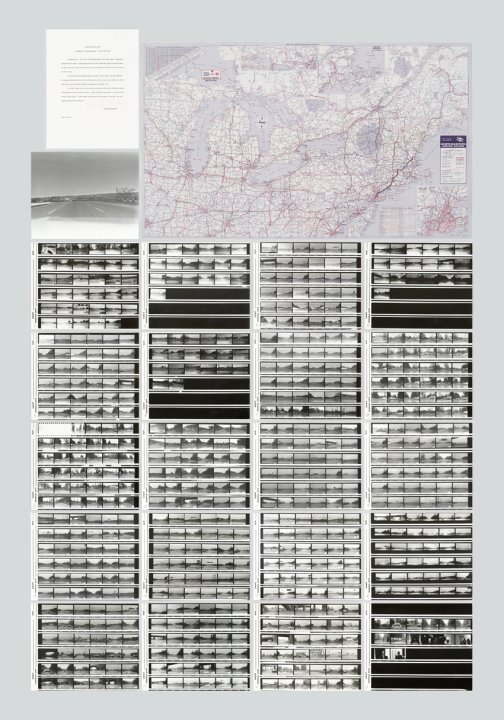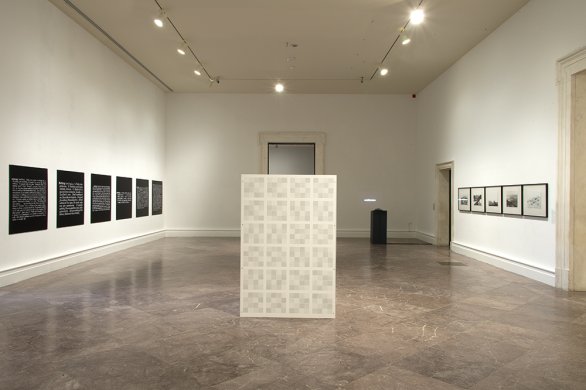Douglas Huebler
American, 1924-1997
Variable Piece No. 49 Bradford Mass.-New York City, 1971
Artwork Details
Materials
statement, map, gelatin silver print photograph, and twenty proof prints
Measurements
statement: 11 1/4 x 8 7/16 inches (28.57 x 21.43 cm); map: 17 15/16 x 30 1/2 inches (45.56 x 77.47 cm); each proof (sheet): 20 7/8 x 9 13/16 inches (53.02 x 24.92 cm); photograph (sheet): 20 7/8 x 9 13/16 inches (53.02 x 24.92 cm)
Collection Buffalo AKG Art Museum
Credit
The Panza Collection and by exchange: George B. and Jenny R. Mathews Fund, Bequest of Arthur B. Michael, Albert H. Tracy Fund and Bequest of John Mortimer Schiff, 2015
Accession ID
2015:14.17a-w
In Variable Piece No. 49 Bradford Mass.–New York City, Douglas Huebler assembled a range of photographic and textual documentation to record the journey from his home in Bradford, Massachusetts, to the Leo Castelli Gallery in New York on March 13, 1971. While the map traces the artist’s 240-mile, hours-long journey as a single meandering line, the photographs on the contact sheets document the trip as a series of discrete moments. While these two forms of documentation represent contrasting perspectives, each is limited in its scope and offers an incomplete record of an experience in time and space. First known as a painter and then a sculptor, by 1967 Huebler developed a conceptual art practice in which the artwork responds to its environment and exhibition context. For example, as with other works in the Variable Piece series, the final form of Variable Piece No. 49 is left open to a participant, owner, or viewer. As part of the work, the collector must select the most “boring” image from those taken by the artist for photographic enlargement and printing. Only with this selection is the set of documents comprising the piece complete. While this directive acknowledges the importance of the collector (whose money helps support the artist’s production), it also asks him or her to judge the work according to its banality—a typically undesirable characteristic—offering a playful comment on the collector’s aesthetic sensibility.
Label from Looking at Tomorrow: Light and Language from The Panza Collection, 1967–1990, October 24, 2015–February 7, 2016


